Basic Synth 1: Oscillators
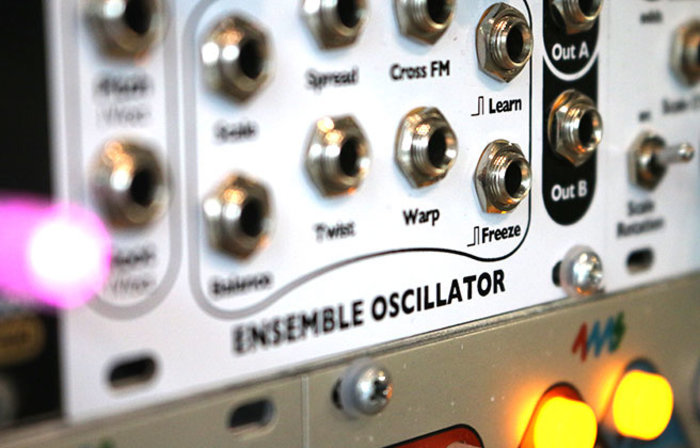
In modular synthesis, we begin our journey with a sound source - an example of which would be a periodic waveform such as a sawtooth waveform or a square waveform generated by a voltage controlled oscillator (VCO). This waveform is created by a voltage signal. This voltage signal oscillates at the frequency (speed), amplitude (loudness), and waveform (harmonic content) set by the oscillator's controls. The initial signal is generated by the oscillator and perceived as a sound. It is then processed and controlled in different ways along its signal path as one module is patched to another (… and another… and another!).
In this post, we're going to talk about some key concepts of sound, waveform identification, and oscillator types. But for now, here are the big questions that come to mind:
-
What is sound?
-
What parameters does it consist of?
-
How do I visualize it?
Concepts:
Think of your room fan at your home. It's likely that there's a button on it called, "Oscillate." When you press it the fan moves from side to side at a set speed. Oscillations of voltage behave the exact same way, but they move up and down and at much faster speeds (frequency), in definable shapes of movement (waveform), and in definable depth (amplitude).
Sounds are made up of a fundamental frequency and its (sometimes many) harmonics. Harmonics (also referred to as partials) are integer multiple frequencies based on the fundamental frequency of the sound. The fundamental frequency is the the lowest frequency in a waveform and it defines the pitch of the sound. The fundamental frequency is measured in cycles per second (cps) (also called the period). The higher the cycles per second, the higher the pitch of the sound. I like to think of harmonics as the characteristic harmonic makeup of a waveform. A single sound can have an enormous amount of partials all at different frequencies and amplitudes. In short, harmonics define the quality of the sound.
Specific collections of harmonics define a waveform. For instance, a single fundamental frequency with no partials will create a sine waveform. Adding odd-numbered harmonics that decay in amplitude as they increase in frequency can change the sine waveform into a triangle waveform. Adding even-numbered harmonics (with the same behavior) on top of triangle waveform can change it to a sawtooth/ramp waveform - so on and so forth, forever and ever. I like to think of waveforms as the actual contour, or shape of voltage that is being generated by the oscillator.
Classic waveforms:
- Sawtooth: The most harmonically rich sounding waveform. Consists of the fundamental and both even and odd harmonics.
- Ramp: Inverted sawtooth waveform. Sounds identical to sawtooth waveform, but has different qualities when used as a low frequency oscillator (LFO).
- Square: The second most full sounding waveform. Consists of the fundamental and odd harmonics only. It has a 50% pulse width, meaning that widths of the positive portion of the waveform and the negative portion of the waveform are the same.
- Pulse: An symmetrical version of a square waveform. It’s positive portion has a different width than its negative portion. Often including pulse width modulation (PWM) functionality. As the pulse width moves away from 50%, even harmonics are introduced and the fundamental gets weaker. Has a nasally character to its sound and is often used for doppler effects.
- Triangle: It has a slightly more dense frequency spectrum than the sine waveform. Consists of the fundamental and odd harmonics only. Odd harmonics rapidly decay in amplitude over the course of the waveform cycle.
- Sine: Short for sinusoidal. The most basic of all waveforms. Only has a fundamental with no other harmonics.


(Image courtesy of Bob Moog Foundation)
Analog or Digital:
Waveforms can be generated by analog circuitry or digital computing. Both have their own characteristics and uses. For instance, analog circuitry can never produce mathematically true representations of waveforms and different types of oscillators will have different inconsistencies. Some say that the imperfect circuitry of the analog method creates waveforms with a warm and deep character. Instead of being created with circuitry, digital waveforms are generated by a computer chip. At higher resolutions, they can sound very pure. Some say these can even sound lifeless due to their lack of inconsistency. Digital waveforms at lower resolutions create waveforms that are more harsh and abrasive. Realistically, both the analog and digital methods have merit and can be used for wildly different sounds - our suggestion is to use both!
Oscillator Types:
Oscillators come in many different configurations. Some big, some small, and they often have a plethora of available waveforms and features.
Oscillators exist on keyboard synthesizers as well and are usually found close to the left-most section of the synthesizer's panel.
Basic Oscillators:
A basic oscillator usually includes a collection of the classic waveforms listed above. Any of the waveform outputs on an oscillator can be directly monitored. When directly monitored, it's important to note that oscillators will continually drone until further patched within a system.
Basic oscillators have coarse and fine tune knobs that will change the pitch (frequency) of the oscillator as well as a 1 Volt per Octave control voltage input (1V/Oct) to externally control the pitch of the oscillator. Some might even have a pulse width modulation, frequency modulation, or synchronization capabilities via panel controls or CV inputs.
Basic oscillators are often (but not always) analog.
When analog, an oscillator core creates the initial waveform, either sawtooth/ramp waveforms or triangle waveforms are used. The other waveforms that the analog oscillator offers are wave shaped from the initial waveform generated by the oscillator core.
Examples of basic oscillators:
Complex Oscillators:
The idea of the complex oscillator comes from an infamous module called the Buchla 259 module.
Compelx oscillators consist of two oscillators (both similar to the basic oscillator) that are hard-wired (normalled) to influence, or modulate each other's parameters. The most basic form of this modulation setup would be the frequency, waveform, and amplitude of oscillator 1 controlling the frequency of oscillator 2. The inverse is also achievable, where the frequency, waveform, and amplitude of oscillator 2 controls the frequency of oscillator 1. This modulation setup can be used for frequency modulation (FM), amplitude modulation (AM), pulse width modulation (PWM), hard and soft synchronization, and wavefolding and waveshaping. At least one of the oscillators will be able to be set to low frequency range (LFO).
Complex oscillators can have added features such as:
Linear or exponential frequency modulation
Wavefolding and waveshaping
Soft and hard synchronization
Low frequency oscillator range frequency
Amplitude modulation
Complex oscillators are often (but not always) analog.
When analog, the available waveforms are also derived from oscillator cores - one per oscillator.
Examples of complex oscillators:
- Endorphin.es Furthrrrr Generator
- Industrial Music Electronics Hertz Donut MKIII
- Instruō Cš-L
- Make Noise DPO
Wavetable Oscillators:
Wavetable oscillators digitally compute and generate waveforms. The waveform is sampled and sequenced across a wavetable. A wavetable contains one cycle (period) of the waveform. Because they consist of samples, the higher the resolution of the wavetable, the truer the representation of the waveform.
Wavetable oscillators are always digital.
Examples of wavetable oscillators:
- 4ms Spherical Wavetable Navigator (SWN)
- Erica Synths Graphic VCO
- Industrial Music Electronics Piston Honda MKIII
- Mutable Instruments Plaits
Resonant Lowpass Filters:
Filters are actually going to be our topic for our next post in the Basic Synth series, but let's quickly talk about how they can be used as an oscillator.
This goes back to the "everything is an oscillator" concept that I mentioned earlier.
Lowpass filters are commonly used to subtract high frequency content (harmonics) from a waveform, but they are also used to create sine waveforms without any input signal whatsoever. The way this works is by setting the resonance of the filter to its maximum setting (the resonance parameter is also referred to as the emphasis, feedback, or Q of the filter). When the resonance of a lowpass filter is peaked, the signal feeds back into itself and self-oscillates at the frequency set by the lowpass filter's cutoff parameter. Some filters are even calibrated to 1 Volt per Octave (1V/Oct) and can be externally pitched tracked.
Examples of resonant filters that track 1V/Oct:
- 2hp LPF
- Instruō I-ō47
- Instruō tràigh
- Mutable Instruments Ripples
- Steady State Fate Stereo Dipole
- WMD/SSF MMF
Everything Is An Oscillator:
Not only can dedicated oscillators and lowpass filters be used to create periodic waveforms, but low frequency oscillators (LFO), cycling envelopes generators (EG), and clock signals can also be set to oscillate at sonic frequencies.
Thanks for checking out our blog and learning modular synthesis with us!
Feel free to comment with any questions, ideas, or opinions!
Next article in the Basic Synth series: Basic Synth 2: Filters
 All Modular Brands
All Modular Brands
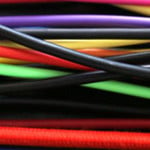 All Patch Cables
All Patch Cables
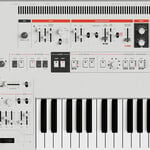 Synthesizers
Synthesizers
 Controllers
Controllers
 Drum Machines
Drum Machines
 Sequencers
Sequencers
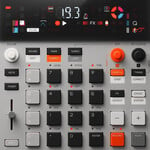 Samplers
Samplers
 Soundmakers
Soundmakers
 DIY
DIY
 Effects
Effects
 Cables
Cables
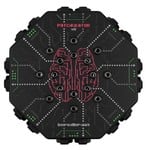 Audio/MIDI
Audio/MIDI
 Video
Video
 Music/Media/Gifts
Music/Media/Gifts
 Accessories
Accessories
 Used
Used
 Vintage
Vintage
 DEALS
DEALS
 Modular
Modular
 Synthesizers
Synthesizers
 Controllers
Controllers
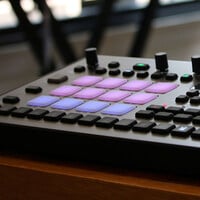 Drum Machines
Drum Machines
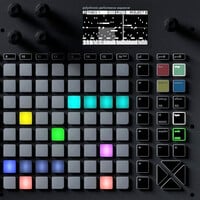 Sequencers
Sequencers
 Samplers
Samplers
 Soundmakers
Soundmakers
 DIY
DIY
 Effects
Effects
 Cables
Cables
 Audio/MIDI
Audio/MIDI
 Video
Video
 Music/Media/Gifts
Music/Media/Gifts
 Accessories
Accessories
 Used
Used
 Vintage
Vintage
 DEALS
DEALS


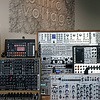


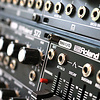
Comments
I basically want to know how it modify's the sound......I'm just a beginner and don't know any of the technical side of these things....if you could give me a basic idea of how it changes the sound, I'd really appreciate it. Thanks, Ant